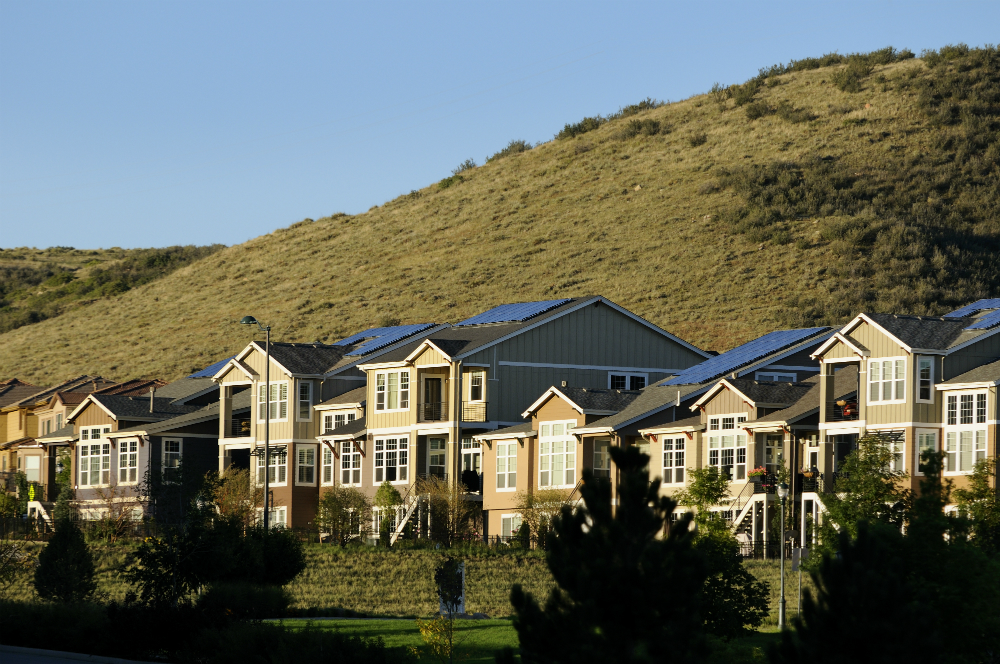Colorado’s growing population and the resulting development has altered hydrology. A summer storm brings torrents of rain pouring over roofs and across sidewalks, flooding city streets and rushing into storm drains before stirring up streams and eroding riverbeds. Though people might be rightfully rejoicing—Colorado needed that soaking rain after all—the ability to maintain water quality is as crucial as the amount that fell.
As new concrete is poured and development is completed, natural groundcover is replaced with impervious surfaces, leading to increased stormwater runoff. According to the U.S. Environmental Protection Agency, polluted runoff from urbanized areas is a leading source of water quality impairments to lakes and rivers. Even as higher building density is touted as a way to boost water efficiency, it can be a threat to clean water—but it doesn’t have to be.
The EPA and Colorado Department of Public Health and Environment have developed stormwater standards and require discharge permits for municipal sewer systems, mandating that urban areas create programs to improve stormwater discharge. Organizations like the Keep It Clean Partnership and Colorado Nonpoint Source Program also offer resources to raise awareness and solve stormwater problems. And land use planners and developers are finding ways to incorporate natural spaces and low-impact development methods to slow—and even filter—stormwater runoff.
“You can say there’s negative water quality from density and urban development but otherwise this development would be happening on a greenfield,” says Becky Fedak, an engineer with the Brendle Group, a sustainability consulting and engineering firm. “We’re finding ways we can encourage urban development but doing our best to manage water quality and stormwater sites to minimize our impact.”
Fort Collins, Denver, unincorporated Adams County and other Colorado communities also account for the impacts of impervious surface areas through stormwater charges, where properties with more concrete or impervious area pay higher rates. In Denver, such charges are calculated based on property size and total impervious area using a combination of aerial and satellite data. Billing for impervious surfaces isn’t practiced everywhere, but stormwater management solutions, including low-impact development, are being implemented nationally and in Colorado. These solutions aim to minimize directly connected impervious areas, giving precipitation as many opportunities as possible to soak into and be filtered by natural groundcover. Living landscapes in urban areas, for instance, act more like natural undeveloped watersheds, which improves water quality and can help reduce the number of flood events, reduce streambank erosion, and improve groundwater recharge.
Important as it is, treating stormwater with low-impact development methods is relatively uncommon. Fort Collins was the first city in Colorado to mandate that some stormwater from all its development sites be treated using low-impact development. Aurora is close on its heels, working to revamp its stormwater management regulations to make low-impact development standard.
Low-Impact Development Methods:

Bioretention—Designed to capture and filter runoff through methods like bio swales or rain gardens, even grass buffers can serve this purpose, though their capacity is determined by the design and soils beneath the vegetation. Find an example in the rain gardens and bio swales at the TAXI development in Denver. Photo: EPA Region 8 Stacey Eriksen

Green Roofs—Vegetated roof covers, like this one that tops the third-story garage creating the Mordecai Childrens’ Garden at the Denver Botanic Gardens, can intercept, slow, and reduce rooftop runoff; at the same time they can reduce energy costs. Photo: Denver Botanic Gardens

Cluster Development—New subdivisions can group their building structures, while intentionally leaving open space to soak up stormwater. As seen here at the RidgeGate development’s ParkSide neighborhood in Lone Tree, CO. RidgeGate’s development kicked off in 2003, with the first residents moving in in 2005. Photo: RidgeGate

Permeable Pavements—Various products like permeable interlocking pavement, porous asphalt, pervious concrete, grid and grass pavement all have great potential to reduce runoff across massive surface areas and, in some cases, to provide detention during flooding. Photo: Chris Olsen


 Print
Print